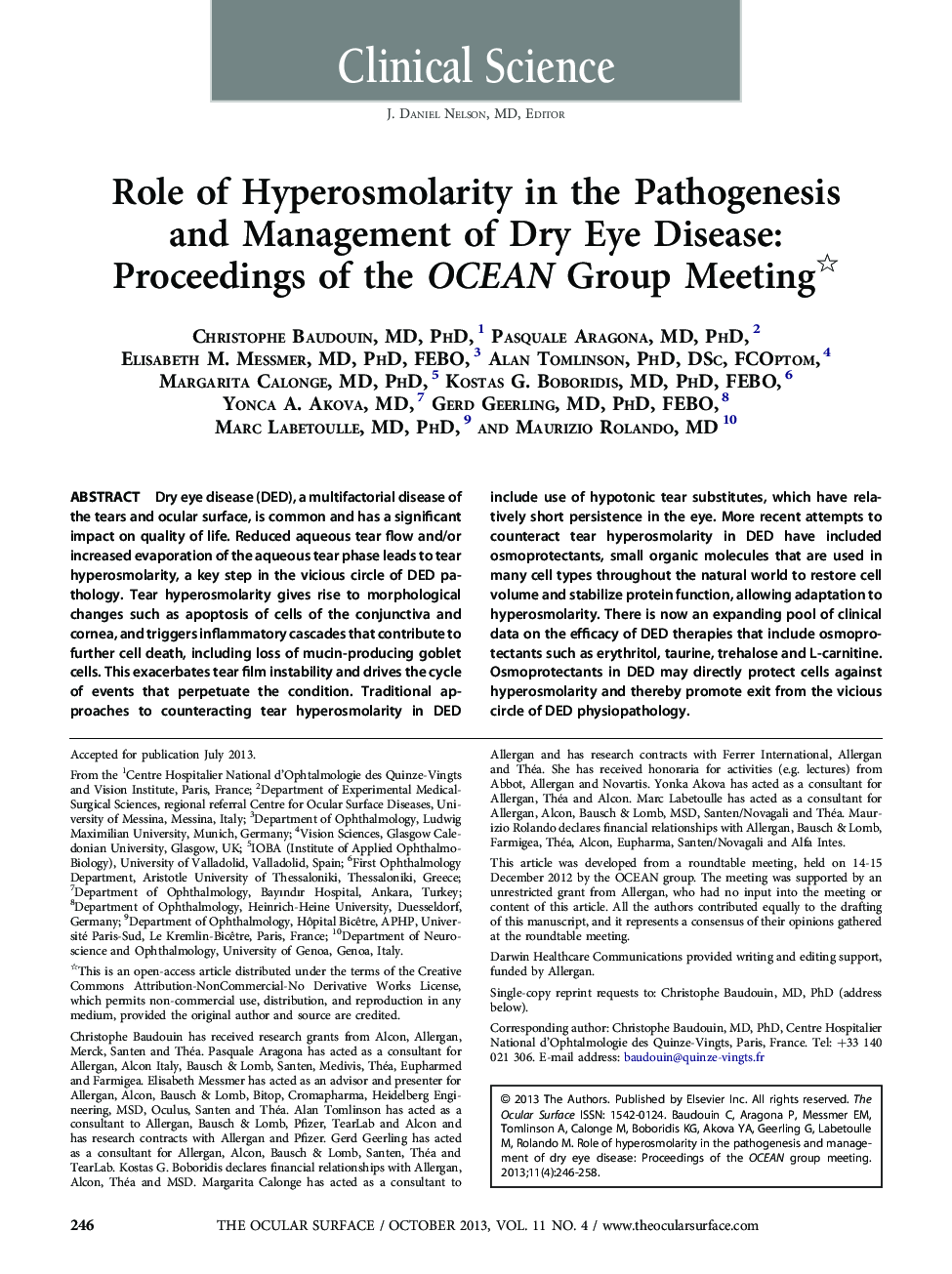| Article ID | Journal | Published Year | Pages | File Type |
|---|---|---|---|---|
| 10163611 | The Ocular Surface | 2013 | 13 Pages |
Abstract
Dry eye disease (DED), a multifactorial disease of the tears and ocular surface, is common and has a significant impact on quality of life. Reduced aqueous tear flow and/or increased evaporation of the aqueous tear phase leads to tear hyperosmolarity, a key step in the vicious circle of DED pathology. Tear hyperosmolarity gives rise to morphological changes such as apoptosis of cells of the conjunctiva and cornea, and triggers inflammatory cascades that contribute to further cell death, including loss of mucin-producing goblet cells. This exacerbates tear film instability and drives the cycle of events that perpetuate the condition. Traditional approaches to counteracting tear hyperosmolarity in DED include use of hypotonic tear substitutes, which have relatively short persistence in the eye. More recent attempts to counteract tear hyperosmolarity in DED have included osmoprotectants, small organic molecules that are used in many cell types throughout the natural world to restore cell volume and stabilize protein function, allowing adaptation to hyperosmolarity. There is now an expanding pool of clinical data on the efficacy of DED therapies that include osmoprotectants such as erythritol, taurine, trehalose and L-carnitine. Osmoprotectants in DED may directly protect cells against hyperosmolarity and thereby promote exit from the vicious circle of DED physiopathology.
Related Topics
Health Sciences
Medicine and Dentistry
Ophthalmology
Authors
Christophe MD, PhD, Pasquale MD, PhD, Elisabeth M. MD, PhD, FEBO, Alan PhD, DSc, FCOptom, Margarita MD, PhD, Kostas G. MD, PhD, FEBO, Yonca A. MD, Gerd MD, PhD, FEBO, Marc MD, PhD, Maurizio MD,
